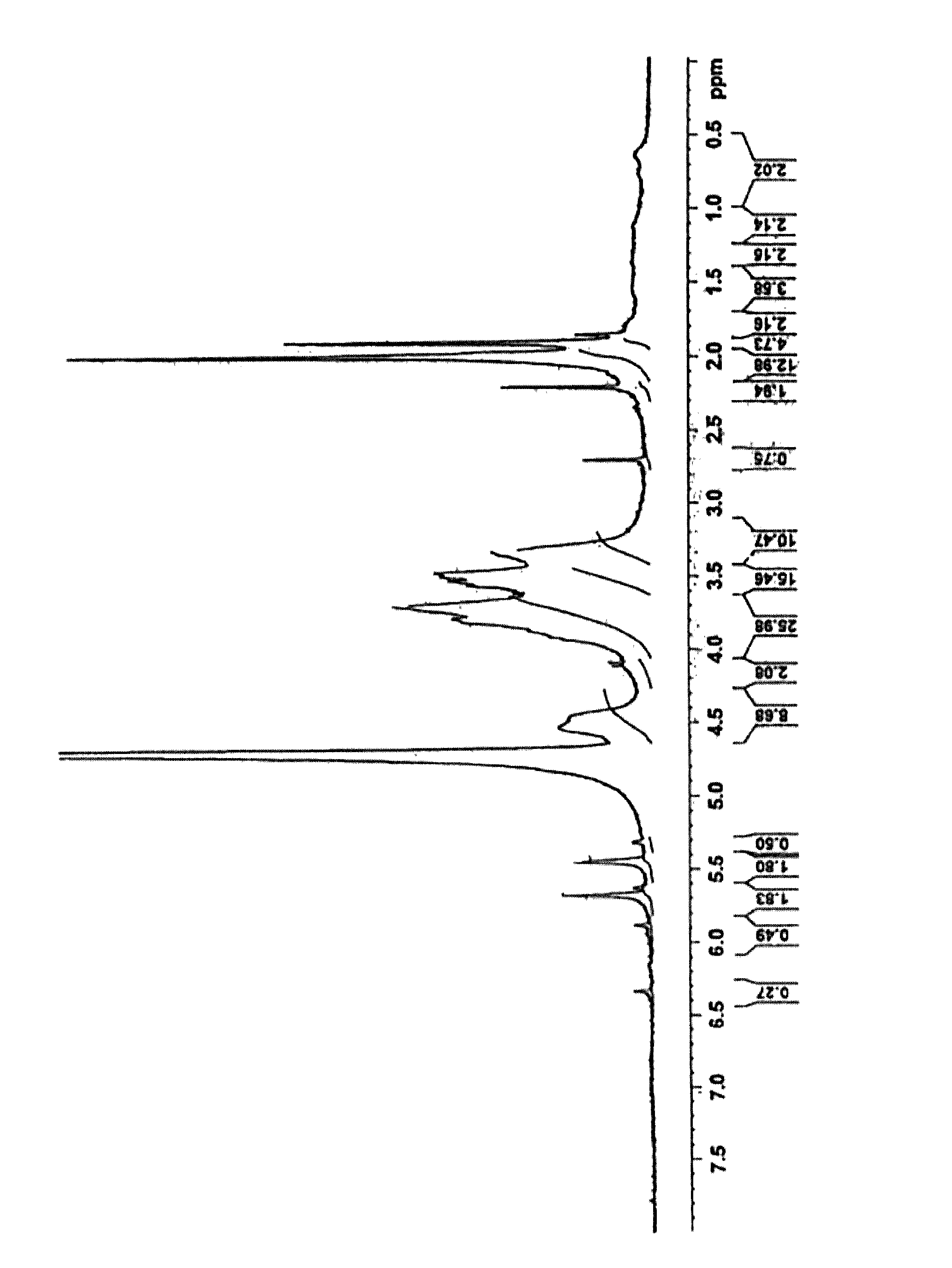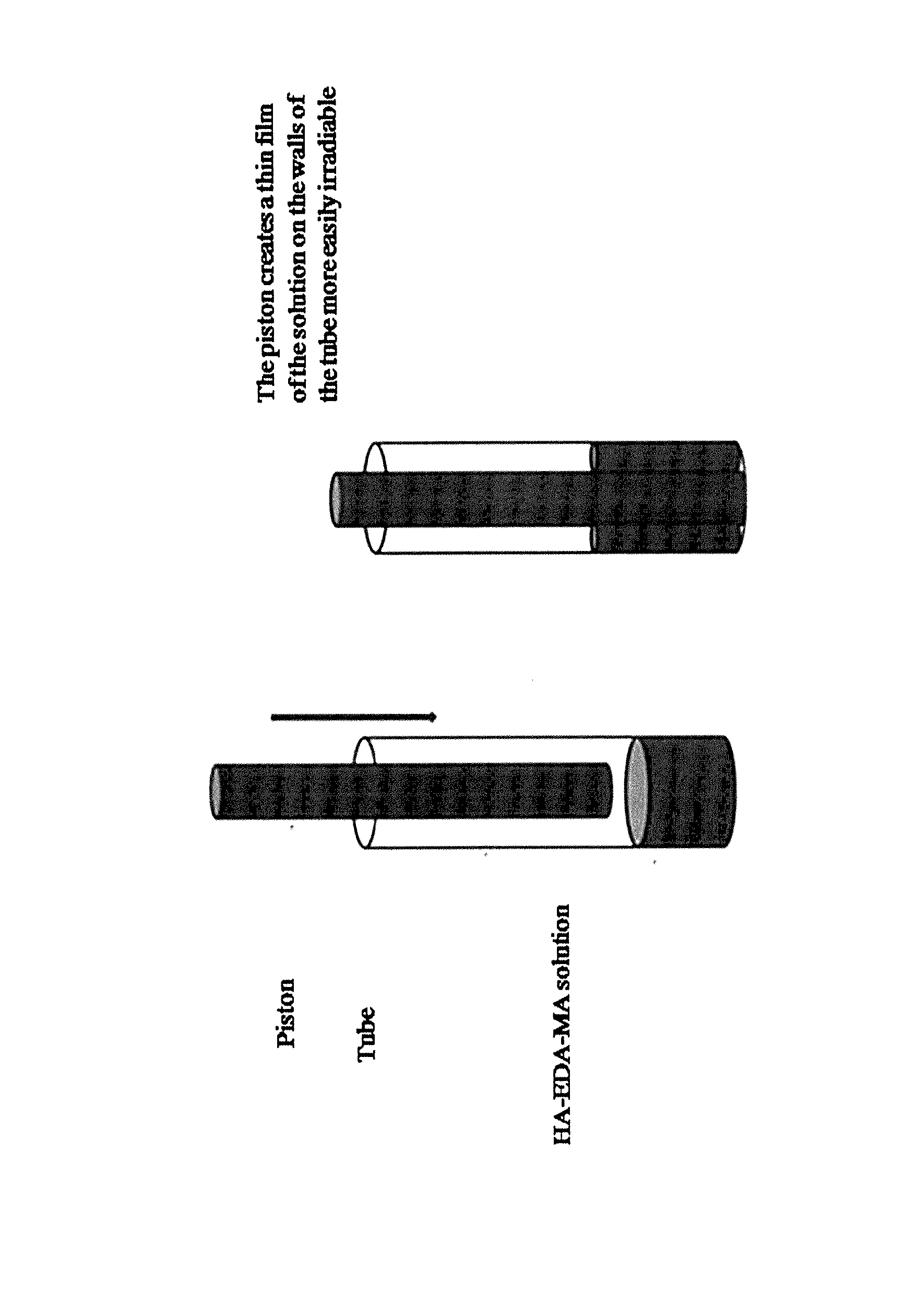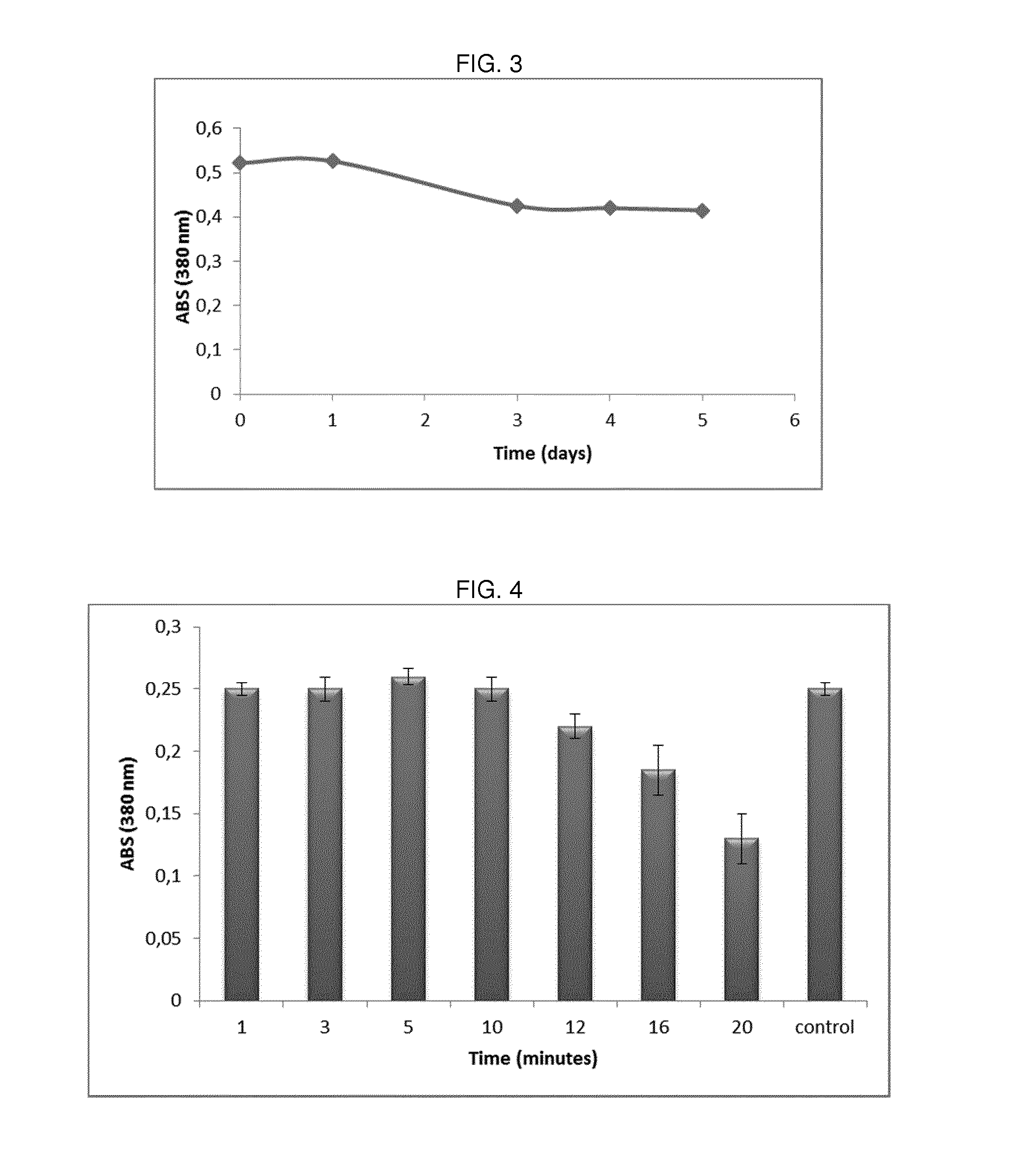Hydrogels of methacrylic hyaluronic acid derivatives for oral enzyme therapy in celiac disease
a technology of methacrylic hyaluronic acid and methacrylic acid, which is applied in the direction of pharmaceutical non-active ingredients, pill delivery, peptide/protein ingredients, etc., can solve the problems of affecting the quality of life of patients, and affecting the treatment effect of patients, etc., to achieve stable and long shelf life
- Summary
- Abstract
- Description
- Claims
- Application Information
AI Technical Summary
Benefits of technology
Problems solved by technology
Method used
Image
Examples
example 1
Preparation of HA-EDA-MA Derivative by One-Pot Synthesis
[0101]1 g of tetrabutylammonium salt of hyaluronic acid (HA-TBA), prepared by hyaluronic acid solution neutralization using tetrabutylammonium hydroxide solution, has been dissolved in 90 ml of anhydrous dimethylsulfoxide (DMSO) (weight-average molecular weight of hyaluronic acid 260 kDa).
[0102]The suitable amount of bis(4-nithrophenyl) carbonate (4-NPBC) chosen in a way to obtain a molar ratio 4-NPBC / Repeating Units of HA-TBA equal to 0.5, has been dissolved in 10 ml of anhydrous DMSO; this solution has been added drop by drop to the HA-TBA solution at 40° C. under stirring. After 4 h, 175 μl of ethylendiamine (EDA) have been added drop by drop and the solution was left at 40° C. for other 3 h.
[0103]An appropriate volume (900 □l) of methacrylic anhydride (MA) to obtain a eight fold molar excess compared to the moles of amino groups on the HA-TBA-EDA, has been added, then 105 □l of catalyst triethylamine (TEA) has been added an...
example 2
Photocrosslinking of HA-EDA-MA Derivative
[0107]30 mg of HA-EDA-MA derivative obtained following the Example 1, have been dissolved in 500 μl of 0.05 M phosphate buffer solution pH 7.2, at room temperature, in order to have a final concentration equal to 6% w / v and degassed under vacuum. Then, the solution has been placed in Pyrex tube and irradiated using a Rayonet photoreactor UV at a wavelength of 366 nm for 10 min (see FIG. 2). After this time, obtained hydrogel has been recovered as gel or freeze dried to obtain a powder.
example 3
Evaluation of PEP FM Activity
[0108]Activity of PEP derived from Flavobacterium meninosepticum (FM) has been measured through a colorimetric assay in which the enzyme reacts with its specific substrate i.e. carbobenzoxy-Gly-Pro-p-nitroanilide (Z-Gly-Prp-pNA).
[0109]In particular, 0.25 ml of 2 mM Z-Gly-Pro-pNA in 40% dioxane have been mixed with 1.0 ml of 0.1 M phosphate buffer solution pH 7.2 and the solution has been preincubated for 5 min at 30° C. After this time, 0.1 ml of enzyme in 0.05 M phosphate buffer solution pH 7.2 has been added and after incubation for 10 min at 30° C., the reaction has been stopped by addition of 2.0 ml of Triton-X100 solution (10 g Triton-X100 / 95 ml 1M acetate buffer, pH 4.0).
[0110]The absorbance of the resulting product has been measured at 380 nm.
[0111]One unit of the enzyme activity is defined as the enzyme activity which produces 1 μmol p-nitroaniline per min at 30° C., pH 7.2, from Z-Gly-Pro-pNA.
PUM
| Property | Measurement | Unit |
|---|---|---|
| molecular weight | aaaaa | aaaaa |
| molecular weight | aaaaa | aaaaa |
| pH | aaaaa | aaaaa |
Abstract
Description
Claims
Application Information
 Login to View More
Login to View More - R&D
- Intellectual Property
- Life Sciences
- Materials
- Tech Scout
- Unparalleled Data Quality
- Higher Quality Content
- 60% Fewer Hallucinations
Browse by: Latest US Patents, China's latest patents, Technical Efficacy Thesaurus, Application Domain, Technology Topic, Popular Technical Reports.
© 2025 PatSnap. All rights reserved.Legal|Privacy policy|Modern Slavery Act Transparency Statement|Sitemap|About US| Contact US: help@patsnap.com



